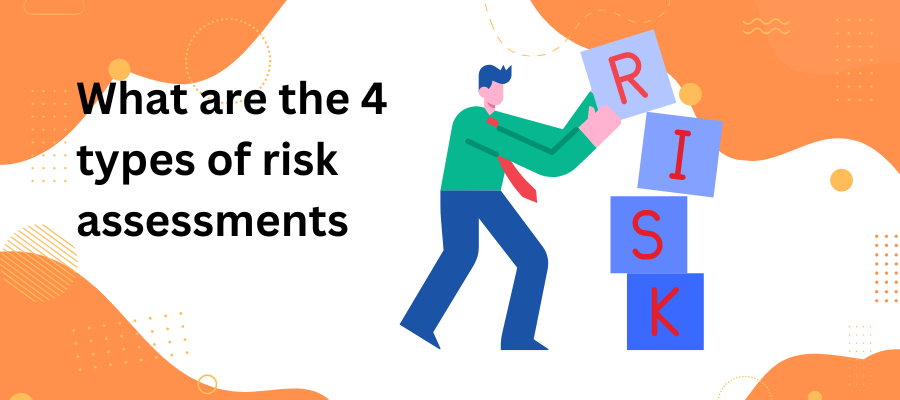Risk assessments are an essential part of any organisation’s risk management strategy. By identifying and analysing potential risks, businesses can make informed decisions to mitigate these risks and protect their assets. There are four main types of risk assessments that organisations commonly utilize: qualitative, quantitative, subjective, and objective. In this article, we will explore each type of risk assessment in-depth, discussing their importance, processes, benefits, and limitations.
Understanding Risk Assessments
The Importance of Risk Assessments
Risk assessments play a crucial role in identifying and assessing potential risks that an organization may face. By conducting risk assessments, businesses can proactively minimize the impact of risks on their operations, finances, reputation, and stakeholders. These assessments provide valuable insights into the likelihood and severity of different risks, allowing organisations to allocate resources effectively and develop appropriate risk mitigation strategies. In short, risk assessments enable businesses to make informed decisions that promote their long-term success and sustainability.
The Process of Conducting Risk Assessments
The process of conducting risk assessments involves several key steps. Firstly, organisations must identify potential risks that they may encounter. This can be done through brainstorming sessions, historical data analysis, or industry-specific research. Once the risks are identified, they are evaluated based on their potential impact and likelihood of occurrence. Qualitative and quantitative risk assessments utilize different methodologies to assess risks objectively or subjectively, depending on the available data and analysis techniques. Finally, organizations prioritize these risks and develop appropriate risk mitigation strategies to address them effectively.
The Four Types of Risk Assessments
Qualitative Risk Assessments
Qualitative risk assessments provide a subjective evaluation of risks based on predetermined criteria. This approach focuses on understanding the potential impact and likelihood of risks. It involves expert judgment, experience, and qualitative analysis to categorize risks according to their severity or priority. Qualitative risk assessments are particularly useful when limited data or uncertainty surrounds a specific risk. While they may lack precision, qualitative assessments provide a foundation for decision-making and initial risk prioritization.
Quantitative Risk Assessments
Quantitative risk assessments, on the other hand, involve a detailed analysis of risks using numerical data. This approach aims to quantify the potential impact and likelihood of risks based on statistical analysis and mathematical models. By assigning values and probabilities to different risk factors, organizations can estimate the potential financial, operational, or reputational impacts of these risks. Quantitative risk assessments are most effective when sufficient data is available, and organizations seek a more objective and precise understanding of risks.
Subjective Risk Assessments
Subjective risk assessments rely on subjective judgments and opinions to evaluate risks. They are often used when there is a lack of reliable data or when risks are difficult to quantify objectively. Subjective risk assessments take into account the insights, experiences, and perspectives of individuals or groups familiar with the organization or industry. While they may be influenced by biases or personal judgments, subjective risk assessments provide a valuable qualitative understanding of risks that can guide decision-making.
Objective Risk Assessments
Objective risk assessments, on the other hand, strive to minimize subjectivity by relying on empirical data and measurable criteria. This approach utilizes statistics, historical data, and standardized methodologies to evaluate risks objectively. Objective risk assessments often involve mathematical models, algorithms, and standardized frameworks to assess risks consistently. By eliminating personal biases and opinions, objective risk assessments provide a more reliable and verifiable understanding of risks.
Deep Dive into Each Type of Risk Assessment
Understanding Qualitative Risk Assessments
Qualitative risk assessments offer a holistic view of risks, considering their severity, prioritisation, and potential impact on an organisation. This approach enables businesses to evaluate risks based on predetermined criteria and expert judgment. While qualitative risk assessments may lack precision, they provide a quick and intuitive understanding of risks that can inform decision-making and risk mitigation strategies.
The Process and Benefits of Quantitative Risk Assessments
Quantitative risk assessments involve a more data-driven and rigorous process. By utilising statistical analysis and mathematical models, organisations can assign numerical values to risks and estimate their potential impacts more accurately. This allows businesses to prioritise risks based on their potential financial, operational, or repetitional consequences. The benefits of quantitative risk assessments include enhanced precision, the ability to quantify and compare risks objectively, and improved resource allocation for risk management efforts.
When to Use Subjective Risk Assessments
Subjective risk assessments are valuable when there is limited data available or when risks are challenging to quantify. They leverage the insights and experiences of individuals or groups familiar with the organization or industry to assess risks qualitatively. Subjective risk assessments prove especially useful during the early stages of risk identification and can provide a qualitative understanding of risks that helps guide decision-making and resource allocation.
The Accuracy of Objective Risk Assessments
Objective risk assessments are highly reliable due to their data-driven nature and standardized methodologies. By using verifiable data, statistical analysis, and standardized frameworks, organizations can obtain an accurate understanding of risks without personal biases or opinions. The accuracy of objective risk assessments allows businesses to make informed decisions based on concrete evidence, leading to more effective risk mitigation strategies.
Comparing the Four Types of Risk Assessments
Strengths and Weaknesses of Each Type
Each type of risk assessment has its own strengths and weaknesses. Qualitative assessments provide a quick understanding of risks but lack precision. Quantitative assessments offer more accurate estimations but may require significant data and resources. Subjective assessments leverage expert opinions but can be influenced by personal biases. Objective assessments provide reliable and verifiable results but may overlook qualitative nuances. Choosing the right risk assessment approach depends on the organisation’s specific needs, available resources, and risk management goals.
Choosing the Right Risk Assessment for Your Needs
When deciding which risk assessment approach to adopt, organisations should consider the nature of their industry, the complexity of their operations, and the availability of data. Ensuring a comprehensive and effective risk management strategy requires selecting the risk assessment method that best aligns with the organisation’s resources, risk tolerance, and desired level of precision. By understanding the strengths and weaknesses of each type of risk assessment, businesses can make informed decisions to protect their interests and ensure their long-term success.
In conclusion, risk assessments are invaluable tools for organisations seeking to identify and mitigate potential risks. By understanding and utilising the four types of risk assessments – qualitative, quantitative, subjective, and objective – businesses can gain valuable insights into the risks they face and make informed decisions to protect their assets. Each type of risk assessment offers unique benefits and limitations, enabling organisations to tailor their risk management strategies to their specific needs. By choosing the appropriate risk assessment approach, businesses can safeguard their operations, enhance decision-making, and foster long-term success.
More from the EHS Blog
ISO 45001 is an internationally recognized standard that sets the...
The Control of Substances Hazardous to Health (COSHH) is a fundamental...
In the realm of project management, Risk Assessment and Method...
In any workplace, ensuring the safety and well-being of employees...







